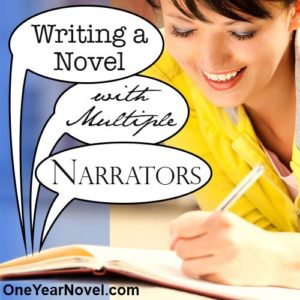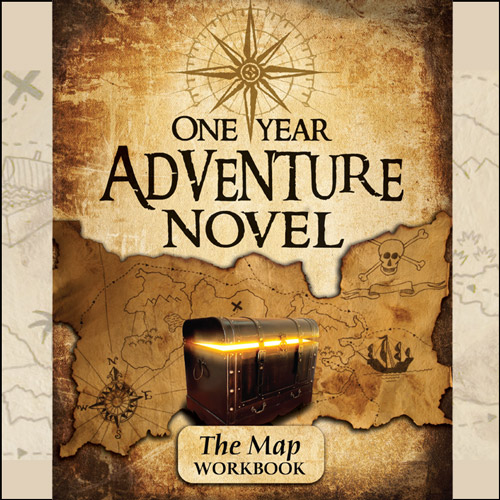Writing a Novel with Multiple Narrators
Gabrielle Schwabauer, Staff Writer
In this blog post, I use “narrator” to refer to any point-of-view character, whether written in first person or third person.
…
 For the last six months, I’ve plotted and outlined a loose retelling of the story of Gladys Aylward. As it has continued to grow, I’ve wrestled with questions about scope. How can I demonstrate the variety of cultures and people groups in my story world without detracting from the main thread of the story?
For the last six months, I’ve plotted and outlined a loose retelling of the story of Gladys Aylward. As it has continued to grow, I’ve wrestled with questions about scope. How can I demonstrate the variety of cultures and people groups in my story world without detracting from the main thread of the story?
Surely one-off visits to unfamiliar cultures with one or two other characters (soon to be left behind) would quickly move from a novelty to a gimmick. But how could I create a real, fleshed-out world for my protagonist if were unable to let her explore it? Reluctantly, I began to consider multiple perspectives, but the task seemed too daunting to be practical.
The idea came to the forefront of my mind when I embarked on a journey through two thick science fiction novels, each with multiple perspectives. My newfound pleasure caused me to ask: Why do I enjoy these four narrators when multiple-perspective stories don’t usually appeal to me?
The answers I found have unlocked my own project and helped me to plan how and when to give all my different characters space on the page. The following are my suggestions, based on what made a multiple perspective story work for me, as a reader, and the questions I ask myself as I outline my own work. Each of these tactics can add a layer of depth to your use of multiple point-of-view (POV) characters.
My foremost suggestion is an overarching story. You must be able to justify your use of multiple perspectives—why do we need three perspective characters, after all? In my opinion, the best answer is this: Because all three perspective characters tell a different but essential part of one larger story. Now, that’s not to say that they all must have the same goal or that they can’t have mostly distinct stories. What it does mean is that they should all be providing information about something bigger—some external danger, problem, or mystery that all POV characters encounter at some point.
In the same vein, it’s helpful to include events that affect more than one narrator. I don’t mean that Will and Jan have to end up in the same restaurant, watching the same meteor strike the same road. I do mean that the meteor will be more interesting if it affects them both. This also has the benefit of giving your reader the sense that these characters are, in fact, inhabiting the same story world. Janina provides news coverage as the meteor falls. William is out of a job because he worked at the vet clinic the meteor demolished.
If you do this enough, your reader will start doing it for you, asking questions like “Wait, if William doesn’t get that new job, who will tell Janina about the spy at the weather station?” These are the questions that you want your readers to ask—they demonstrate that your reader is not forgetting about Janina even when William is the one “onscreen.”
If you want to tie multiple POV characters even closer together, you can include intertwining storylines. These are stories that not only inhabit the same plane but cross over each other multiple times. You can do this with or without the knowledge of the characters—William might give Agent Janina a knowing nod as he sets her poodle’s leg, or he might just think “Why does this lady with sunglasses keep showing up at my job?” Either way, it provides an opportunity to show how your narrators are “collaborating” (even if they don’t know it) to fill in details of each other’s stories and of your overarching story.
If two or more POV characters interact frequently, you’re going to want to bring in conflict between perspectives. This can heighten reader engagement, especially if your reader likes both characters. Janina wants A. William wants B. The reader either wants both or can understand both sides, and now you’ve created an internal conflict for the reader as well as one within the story world. It’s also far more painful for the reader if William’s world-saving is thwarted by Janina, who thinks she’s doing the right thing, rather than by the Big Bad Villain.
Conflict is just one of many ways to establish distinct voices and personalities. If your reader doesn’t care just as much about William’s job hunt as he does about Janina’s spy mission, you’re sunk. This is easier to do if your narrators are distinct from one another in obvious ways (think race, gender, age, appearance) as well as deeper ones like personality traits, beliefs, and goals. Not only do Will and Jan have to be fascinating, they have to be very different. Why would we need two Williams narrating the apocalypse?
These conflicts and distinctions help to keep your reader engaged in each storyline. Ideally, that moment of disappointment at the cliffhanger-end of Jan’s chapter should transition as quickly as possible into excitement as the reader remembers what a terrible scrape William is in and how excited they are to watch his great escape. A reader bored by any one perspective is the kiss of death for a multiple POV story. As soon as your reader starts thinking “Oh, darn. It’s William again. Can’t we just get back to Janina and the robots?”—well, that’s when you have to think about reworking William’s perspective entirely if you don’t want to slice him out of the book.
Lastly, make sure the reader meets your narrators as soon as possible. If this is going to be a multiple-perspectives story starring three people, we want to know that right away instead of stumbling upon the third narrator on page 267. I’m certainly not insisting that it’s never been done well before. However, I would argue that it’s far more challenging to pull off, especially if she is going to be a recurring character.
When you introduce us to both William and Janina near the start of the novel, you can devote a similar amount of time to both of them, and the reader will consider them equally important, as long as you write both stories equally well. When you bring William in 2/3 of the way through the story, Janina’s got such a head start with the reader that it will be almost impossible for him to catch up. The reader will think “Why should I care? I don’t want to hear from this new guy. I want to see how the robot interrogation is going.” If you do bring in a new narrator late in the story, understand that they will have to do something or reveal something truly surprising in order to win the reader’s attention, especially if they’re distracting from some moment of high danger.
These tactics have been invaluable in helping me unearth my own story’s problems and outline more effectively. If you think of any tactics I’ve missed, comment below!
…
 About Gabrielle
About Gabrielle
Gabrielle Schwabauer has loved stories for as long as she can remember. (The Lord of the Rings holds the top spot, as it has for twelve years running.) She likes reading books, playing video games, eating stromboli, looking at pictures of sloths, and having already written today.



Well said! I’ve read ALOT of multi-POV books where the author had either epic dialogue, or an amazing overall storyline (or both) but ended up just downright killing their story because one or more of their POV’s was just plain boring at times. As a Multi-POV writer myself, I thank you for sharing your advice on avoiding this problem!